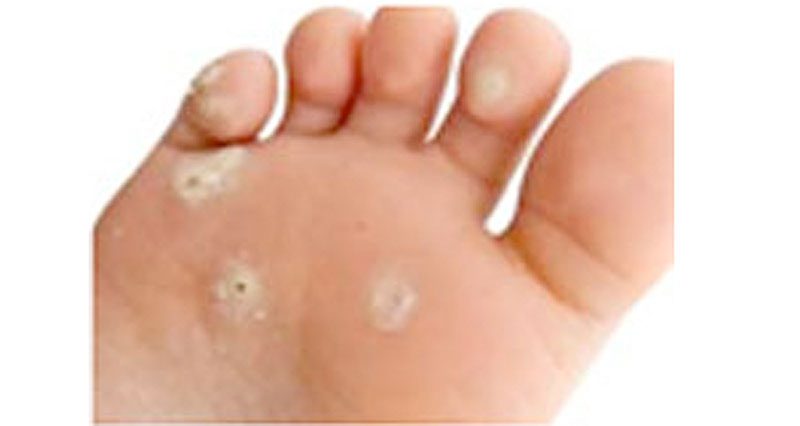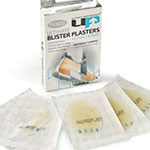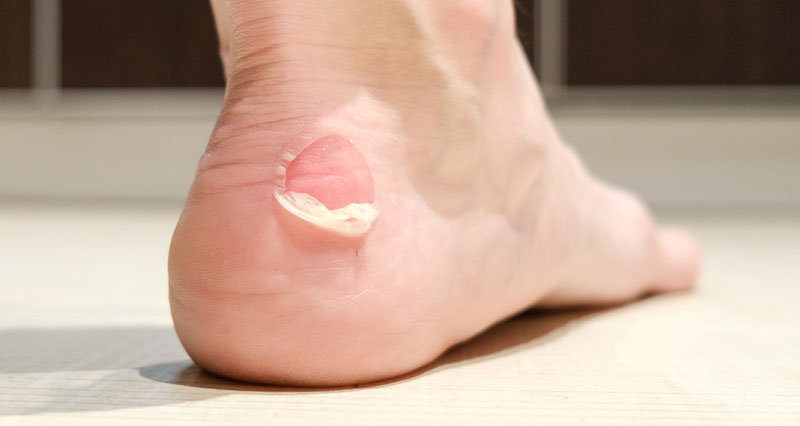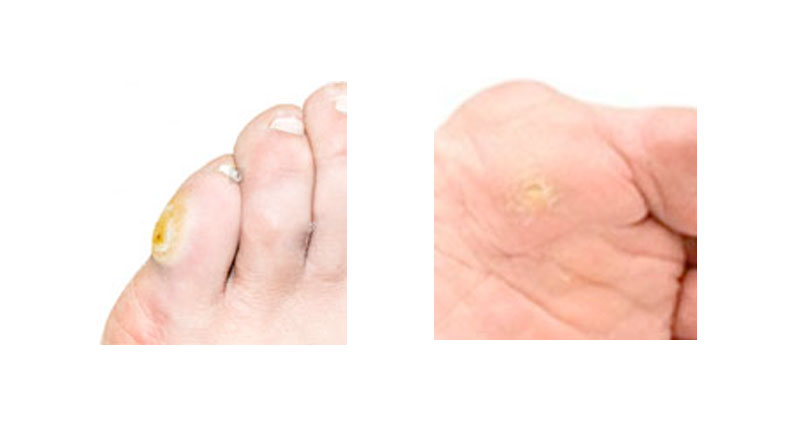A Verruca is a small flat wart on the sole of the foot. They are common in sports, especially in swimming and other sports where you have bare feet in communal, public areas. Here we explain the symptoms, causes, and treatment.
Medically reviewed by Dr Chaminda Goonetilleke, 20th Jan. 2022
What is a Verruca?
A Verruca is also known as a plantar wart. It appears on the sole of the foot and varies in size. They are not normally anything to worry about, although care should be taken as they are contagious.
It is not usually painful, although may be tender when pressed, especially from the sides.
Some may be particularly painful on weight-bearing and feel like a small stone under the foot.
They vary in size from 1mm to over a centimetre across. They also vary in shape too.
The surface of the verruca is usually covered with small black dots. These are blood vessels and are usually surrounded by hard skin.
A Verruca is different from a Corn in that when you press in from the sides they will be painful, whereas Corns are more painful with direct pressure applied onto them.
What causes a Verruca?
They are the same as warts on any other body part and are caused by a virus, known as human papillomavirus (HPV). Warts and verrucas are very common and nothing to worry about, although should be treated as they are mildly contagious.
Verrucas are passed on via direct skin-to-skin contact or from the floors of swimming pools and showers. They can be passed to other areas of the body, particularly the fingers. There is a higher risk of passing a verruca on if your skin is damaged or wet.
Treatment & precautions
To avoid passing it on make sure it is covered when swimming by a waterproof plaster or verruca sock. Wearing flip-flops when walking barefoot and in the shower is advised and never share towels.
There is no real need to treat a verruca unless it is causing problems or is uncomfortable to walk on. Most will go away on their own within 2 years, although treatments may clear it sooner. These include salicylic acid creams which should be applied daily for several weeks. Salicylic acid plasters are available that cover the area.
Freezing treatments can be performed by a doctor or nurse to freeze burn the verruca away although several treatments may be required. Covering the area with strong adhesive tape such as duct tape has also been known as a treatment method.



